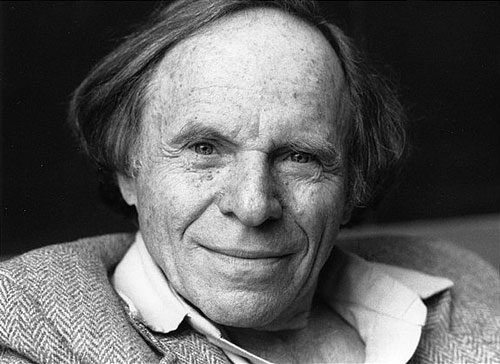Philip Morrison (1915-2005) was an American physicist.
Morrison studied under J. Robert Oppenheimer at the University of California, Berkeley, and received his Ph.D. in 1940. In 1942, he joined the Chicago Met Lab as a research associate. He transferred to Los Alamos in 1944, where he worked in the critical assemblies group of the Weapon Physics Division and participated in dangerous criticality experiments.
On July 12, 1945, Morrison rode from Los Alamos to the Trinity Site in the back seat of a sedan, next to the case that contained the Gadget’s plutonium core. After witnessing the Trinity test, Morrison traveled to Tinian Island as a Pit Team leader for Project Alberta, where he helped oversee the assembly of the “Fat Man” plutonium bomb.
After the war’s end, Morrison traveled to Japan as part of the Manhattan Project’s survey of the devastation caused by the atomic bombs. He described the damage in Hiroshima: “There was just one enormous, flat, rust-red scar, and no green or gray, because there were no roofs or vegetation left.” This experience was formative in his stance against the use of nuclear weapons in wartime.
Later Years
After the war, Morrison turned down Ernest Lawrence’s offer to return to Berkeley, instead joining Hans Bethe at Cornell. He became a champion of nuclear nonproliferation, helping found the Federation of American Scientists and the Institute for Defense and Disarmament Studies.
Morrison had previously been a member of the Communist Party and was investigated by the House Un-American Activities Committee during the 1950s. Though an ex-communist, he remained employed and academically active throughout the 1950s. Academically, Morrison’s interests shifted to space, writing one of the first proposals for detecting extraterrestrial intelligence. In 1964, he moved onto MIT, where he remained through the rest of his career, working on the Compton Effect and exploring space through x-ray and gamma ray emissions.
Morrison also made efforts in popular science education, hosting the 1987 PBS television series The Ring of Truth, and writing numerous books and articles. He received numerous honors throughout his career.





